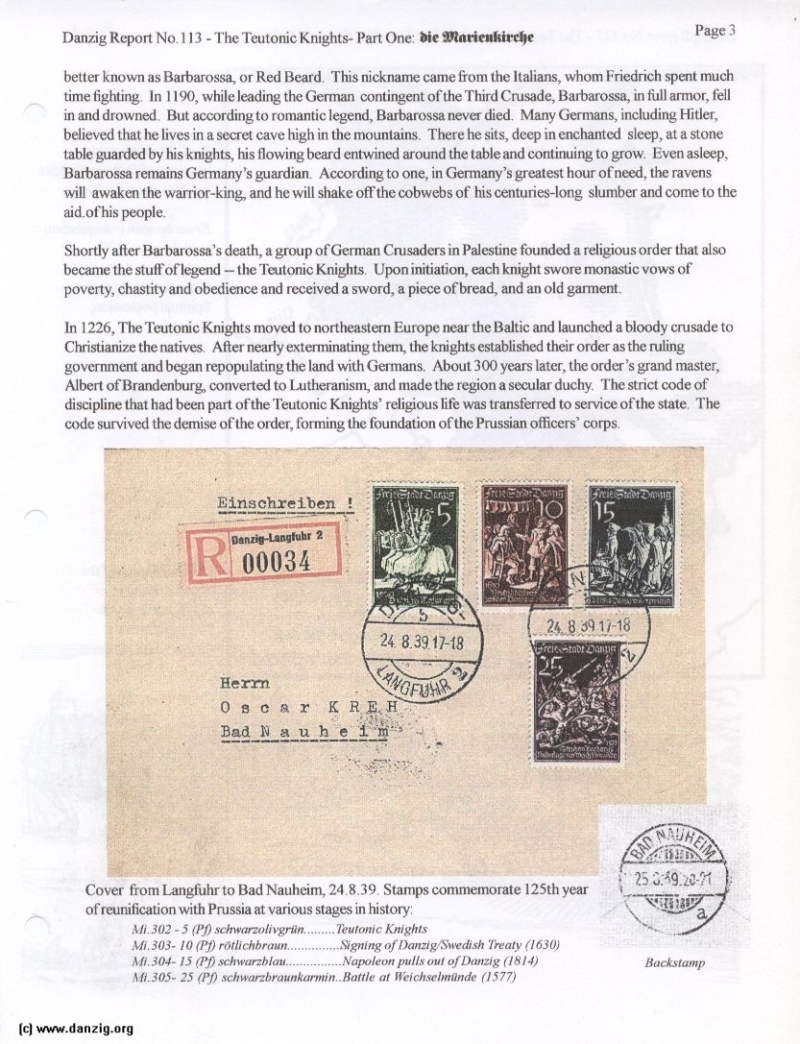
History of the builders of the Marienkirche
better known as Barbarossa, or Red Beard. This nickname came from the Italians, whom Friedrich spent much time fighting In 1190, while leading the German contingent of the Third Crusade, Barbarossa, in full armor, fell in and drowned But according to romantic legend, Barbarossa never died, Many Germans, including Hitler, believed that he lives in a secret cave high in the mountains. There he sits, deep in enchanted sleep, at a stone table guarded by his knights, his flowing beard entwined around the table and continuing to grow. liven asleep. Barbarossa remains Germany’s guardian. According to one, in Germany’s greatest hour of need, the ravens will awaken the warrior-king, and he will shake off the cobwebs of his centuries-long slumber and come to the Adolf his people.
Shortly after Barbarossa’s death, a group of German Crusaders in Palestine founded a religious order that also became the stuff of legend — the Teutonic Knights. Upon initiation, each knight swore monastic vows of poverty, chastity and obedience and received a sword, a piece of bread, and an old garment.
In 1226, The Teutonic Knights moved to northeastern Europe near the Baltic and launched a bloody consider to Christianize the natives. After nearly exterminating them, the knights established their order as the ruling government and began repopulating the land with Germans. About 300 years later, the order’s grand master, Albert of Brandenburg, converted to Lutheranism, and made the region a secular duchy. The strict code of discipline that had been part of the Teutonic Knights’ religious life was transferred to service of the state. The code survived the demise of the order, forming the foundation of the Prussian officers’ corps.
Danzig Report Nr. 113 - October - November - December - 2001, Page 3.
Hits: 3866
Added: 30/07/2015
Copyright: 2025 Danzig.org

